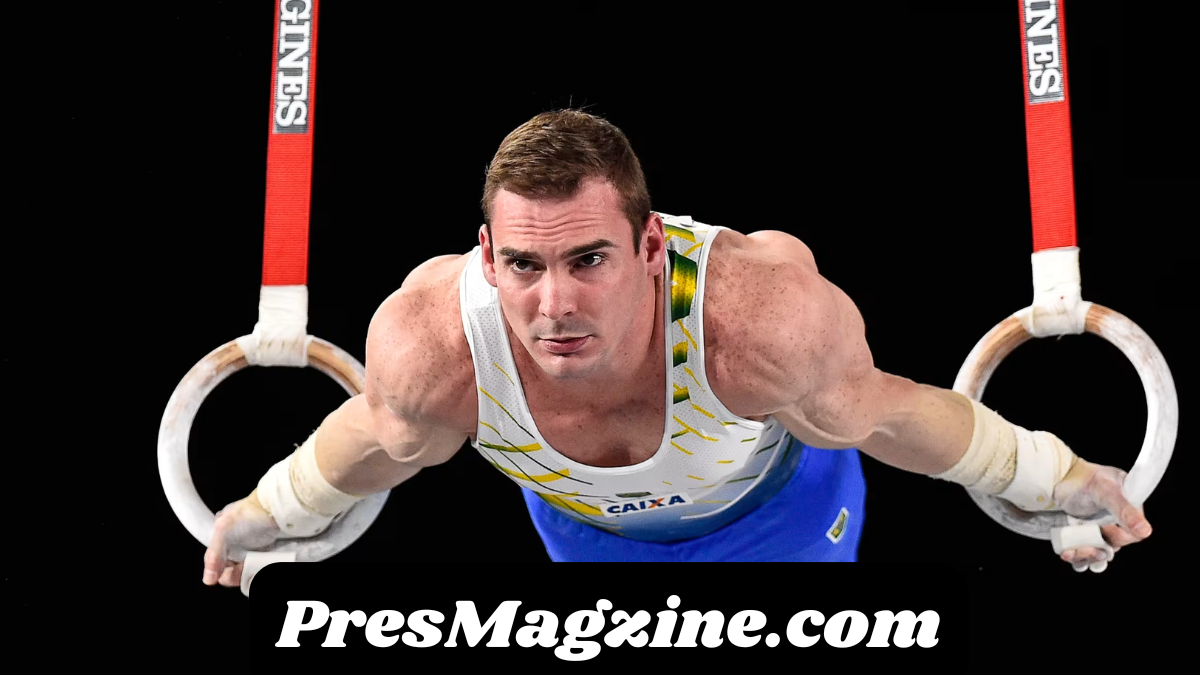The Gymnastics Rings Olympics event is one of the most awe-inspiring spectacles in the Olympic Games. With roots stretching back to ancient times and formal development during the 19th century, rings have become a defining feature of men’s artistic gymnastics. Known for requiring immense strength, precision, and control, this apparatus demands an extraordinary combination of power and elegance from athletes. The story of the rings in the Olympic Games is not just one of physical dominance but also of technical innovation, national pride, and human perseverance.
The rings event debuted in the very first modern Olympic Games held in Athens in 1896. At that time, gymnastics as a sport looked very different from what it is today. The routines were less standardized, and equipment varied significantly across regions. However, even in that early phase, rings were recognized as a formidable test of upper-body strength and coordination. The rings hung from simple hemp ropes and lacked the technological enhancements of modern equipment. Nonetheless, their symbolism as a test of physical mastery was clear from the beginning.
Over the next several decades, rings would continue to evolve, both in terms of equipment and the routines performed on them. As gymnastics matured into a more refined competitive discipline, the rings event was codified with standardized rules and scoring. The apparatus itself was improved to reduce unwanted swing and to allow gymnasts to Gymnastics Rings Olympics execute routines with greater stability and precision. Despite these changes, the essence of the rings remained consistent: to showcase the extraordinary capability of the human body in motion and stillness.
Technical Mastery and Athletic Demand
The rings apparatus, while seemingly simple in design, is widely regarded as the most physically demanding event in men’s artistic gymnastics. It consists of two circular wooden rings, each suspended from cables attached to a high frame. Athletes must perform a routine that includes a combination of strength holds, controlled swings, and precise dismounts. What makes rings unique among gymnastics events is the requirement for both dynamic movement and complete stillness.
One of the most iconic elements on rings is the Iron Cross, where the gymnast holds their body in a horizontal position with arms extended straight out to the sides. This move alone requires exceptional shoulder strength and core stability. Other elements include the Maltese cross, planche, and inverted crosses—all of which push the human body to its limits. Transitions between elements must be seamless, and athletes are judged on both the difficulty of the routine and the execution of each movement.
Training for the rings is grueling. Gymnasts must develop not only raw strength but also the neuromuscular control to maintain stability on an apparatus that naturally swings with any shift in balance. Unlike the floor or vault, which reward explosive movement, the rings reward poise, control, and resilience. A routine typically lasts under a minute, but within that brief window, every muscle in the body is taxed.
In recent decades, scoring criteria have evolved to better reward technical difficulty and artistic presentation. The Code of Points, maintained by the International Gymnastics Federation, outlines specific requirements for a rings routine, including the number and type of strength holds, swinging elements, and the nature of the dismount. This structure ensures that routines continue to push the boundaries of athletic possibility.
The Rings Through Olympic Decades
Throughout Olympic history, the rings event has been dominated by athletes who exhibit not only physical power but also discipline and innovative technique. In the early decades, gymnasts from European nations such as Germany, Switzerland, and Hungary were the primary contenders. As the sport developed, the Soviet Union emerged as a gymnastics powerhouse. Their athletes brought a combination of military discipline and state-supported training systems, setting new standards for rings performance.
During the 1950s and 1960s, athletes like Albert Azaryan from the Soviet Union revolutionized the event. Known for introducing the Azaryan Cross, a one-arm variation of the traditional Iron Cross, Azaryan raised the bar for what was considered possible on rings. He won back-to-back Olympic gold medals in 1956 and 1960, establishing himself as one of the greatest ring specialists of all time. His influence extended beyond medals, shaping the way athletes approached training and routine construction.
The 1970s and 1980s saw the continued dominance of Eastern European nations, especially Romania, Bulgaria, and East Germany. These countries developed national training systems that identified talent early and emphasized technical perfection. Gymnasts during this period began to incorporate more complex transitions and increased the difficulty of their dismounts, often landing from multiple flips and twists with precision.
In the 1990s, Italy’s Jury Chechi earned the nickname “Lord of the Rings” due to his sustained excellence on the apparatus. Chechi won gold at the 1996 Atlanta Olympics after being a world champion for several years. His routines combined impeccable strength elements with fluid transitions, making his performances both technically flawless and visually captivating.
As the new millennium began, the field became increasingly diverse. Athletes from countries like Greece, Brazil, and China began to rise through the ranks, demonstrating that elite-level rings gymnastics was no longer limited to a handful of nations. The globalization of the sport brought new styles and interpretations, enriching the competitive landscape.
Iconic Champions and Historic Performances
Several gymnasts have left an indelible mark on the rings event, becoming legends not only because of their victories but also because of the way they transformed the sport.
Leon Štukelj, a Slovenian gymnast competing for Yugoslavia, won Olympic gold in rings at the 1928 Amsterdam Games. He was known for his graceful form and pioneering skills that laid the foundation for modern routines. His legacy continued long after retirement, and he lived to be over 100, becoming a beloved figure in the Olympic community.
Albert Azaryan, as mentioned earlier, stands as a central figure in rings history. His signature move and competitive dominance set new standards in the mid-20th century. He was celebrated not just in his homeland Armenia but across the global gymnastics community for his innovations.
Jury Chechi’s influence extended beyond his Olympic victory. After suffering multiple injuries that could have ended his career, Chechi made an extraordinary comeback to compete again at age 34, an age when most gymnasts have long since retired. His longevity and resilience continue to inspire athletes today.
Arthur Zanetti of Brazil made history by winning gold at the London 2012 Olympics. His victory was groundbreaking as it represented a major milestone for Latin American gymnastics. Zanetti’s success sparked increased investment in gymnastics programs throughout Brazil and neighboring countries.
In the 2016 Rio Olympics, Eleftherios Petrounias of Greece claimed gold on home soil with a breathtaking routine that displayed masterful control and fluidity. He carried on Greece’s historic connection to the rings event, dating back to their debut in Athens more than a century earlier.
In recent Games, Chinese gymnast Liu Yang has emerged as a dominant force. With victories at the Tokyo 2020 and Paris 2024 Olympics, Liu solidified his place among the sport’s greats. His routines are marked by their flawless execution, minimal swing, and high degree of difficulty.
Globalization and Modern Competition
The rings event, once the domain of European and Soviet gymnasts, has now become a truly global competition. Athletes from Asia, South America, and the Middle East have entered the elite ranks, bringing new perspectives and raising the overall level of competition. This globalization is a testament to the universal appeal of gymnastics and the increasing availability of training resources worldwide.
Advancements in sports science, nutrition, and recovery have played a crucial role in this expansion. Athletes are now able to train smarter, prevent injury, and maintain high performance over longer careers. The use of video analysis, strength monitoring, and personalized training plans has enabled gymnasts to perfect even the most difficult skills.
Moreover, the rings have gained popularity among the general public, especially within fitness and calisthenics communities. While the Olympic-level performances remain far out of reach for most, the appeal of bodyweight strength training has drawn attention to the discipline. Social media platforms have amplified the visibility of rings routines, further broadening the sport’s fan base.
Looking Ahead: The Future of Olympic Rings
As gymnastics continues to evolve, the rings event stands as a beacon of tradition and innovation. The technical ceiling is constantly rising, with gymnasts pushing the boundaries of what the human body can endure and perform. Upcoming generations of athletes are introducing new combinations and perfecting previously unimaginable transitions between strength holds and swings.
The sport also faces challenges. The demand for increased difficulty sometimes comes at the cost of execution, leading to debates within the gymnastics community about how to balance innovation with form. Judging criteria must adapt to ensure fairness and clarity while preserving the sport’s core values.
Efforts are also being made to promote greater inclusion and accessibility within gymnastics. While rings remain a men’s event in the Olympics, calls for gender parity are growing louder. Women’s participation in strength-based disciplines continues to rise, and it’s possible that future iterations of the Games may see expanded roles for female athletes in apparatus previously limited to men.
The Olympic Games continue to serve as the ultimate stage for rings gymnastics. Every four years, athletes from around the world gather not Gymnastics Rings Olympics only to compete for medals but to represent their countries, their histories, and their personal journeys. The rings event embodies the spirit of perseverance, resilience, and unity that the Olympics aim to celebrate.
Conclusion
The story of gymnastics rings in the Olympic Games is a powerful narrative of strength, dedication, and innovation. From their early appearance in 1896 to the dazzling performances of modern champions, rings have remained a captivating centerpiece of men’s artistic gymnastics. As athletes continue to defy expectations and redefine the limits of possibility, the rings will undoubtedly retain their place as one of the most revered events in Olympic sport. Their legacy is etched not only in medals and records but in the hearts of those who train for years to grasp, control, and conquer those seemingly simple suspended circles—symbols of human potential at its most extraordinary.

